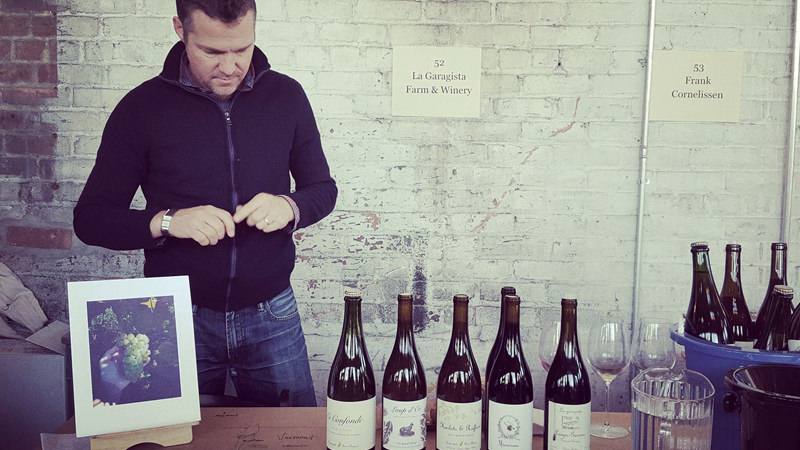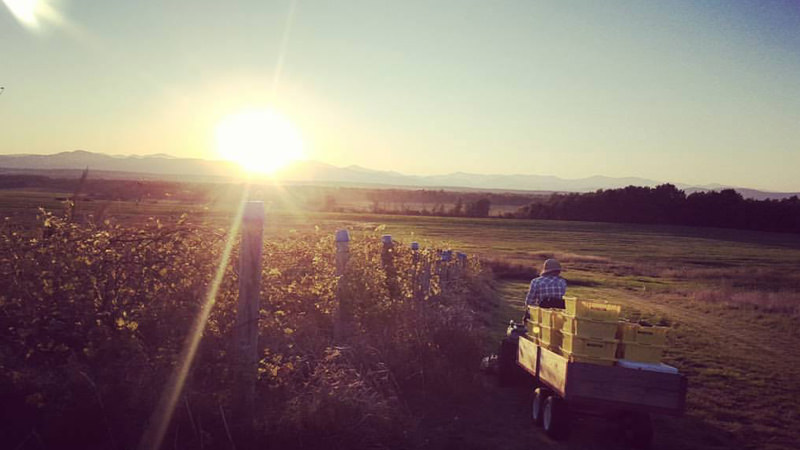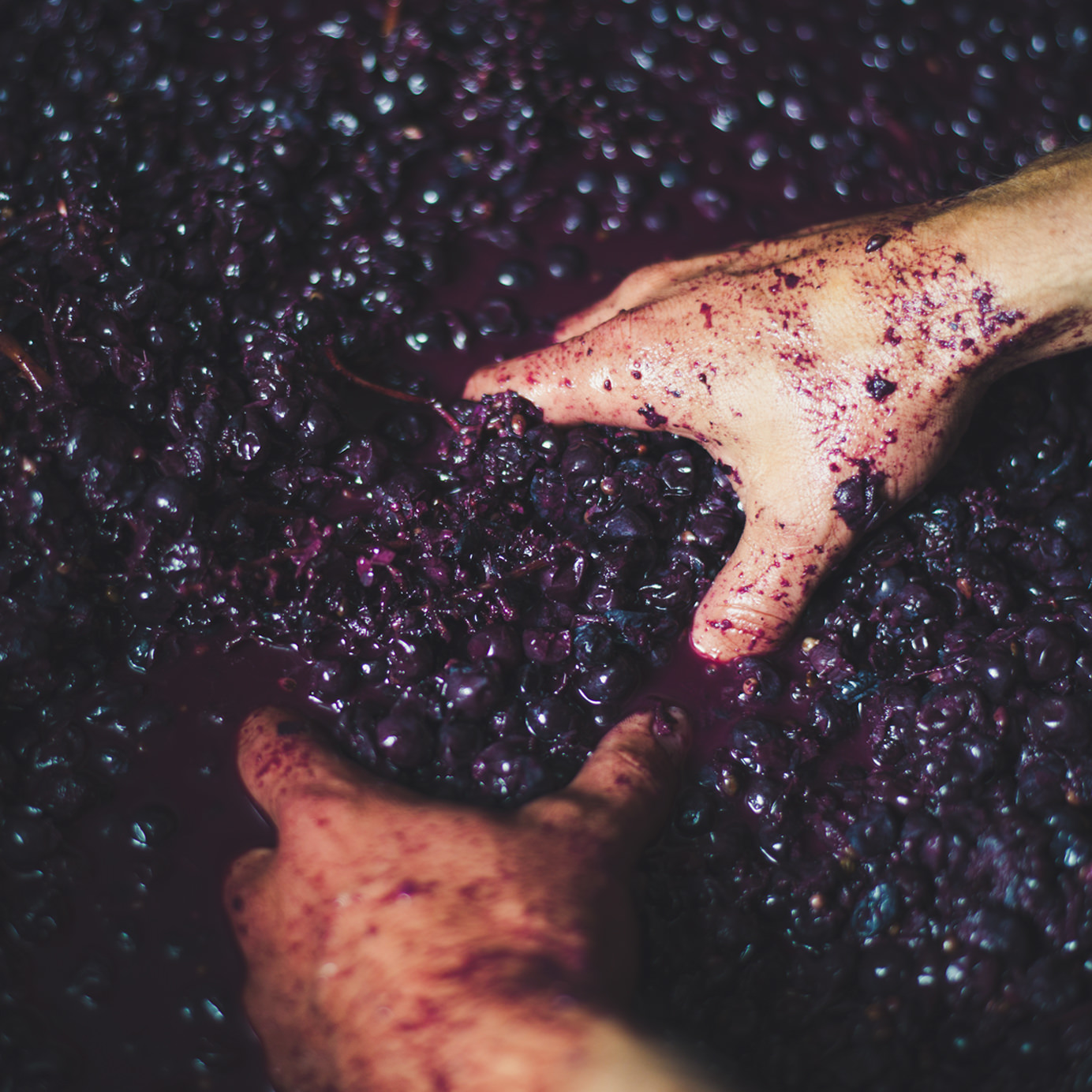Deirdre Heekin and Caleb Barber’s table was swamped with admirers. The couple behind Vermont-based La Garagista Farm and Winery were among some 150 natural winemakers showing off their latest releases at the 2017 RAW WINE Fair in Brooklyn last month.
Staff poured tastes of La Garagista’s Ci Confonde Petillent Natural White 2016. Made from biodynamically grown Brianna, a hybrid grape bred for cold climates, and bottled unsulfured and undisgorged, it was light and fizzy with a grassy flavor and acidity that made it easy to quaff.
“It’s often likened to a sour beer or a cider,” Heekin says. “We joke that this is our gateway wine.”
It was tacit acknowledgement of an American trend: the growing taste for sour flavors. Sourdough bread, house-made pickles, the roughly $7 billion yogurt market — we have fallen in love with the yeasts and bacteria that tart up what we eat.
As Americans embrace fermented foods, tangy beverages are taking off, too. Kefir, kombucha, and drinking vinegars are all hot, but so are tart alcoholic drinks. In 2013, marketing consultants Sterling-Rice Group predicted the rise of sour beer, saying tart, acidic, and bitter flavors would eclipse sweet, salty, and fatty ones.
That forecast has proven correct. Sour beer sales increased fivefold between 2015 and 2016, and the market research group Datassential’s top 15 predicted food trends for 2017 included gose, a tart, and saline German wheat beer. Similarly, the United States Association of Cider Makers reported a 39 percent boost in craft cider sales in 2016.
All of that sets the stage for natural wine. Organically or biodynamically farmed, fermented with wild yeasts, and made with low or no sulfur, natural wines emphasize the complexity of the grapes, including their sour notes. It used to be that American wine was all about fruit and tannins, Heekin says. Now, an evolving thirst for sour beer and cider may be priming our palates for the broader range of flavors in natural wines.
“There’s a rawness, a flavor profile, that jibes very easily with craft beer and cider,” Heekin says. It’s a continuum that can lead a drinker from farmhouse cider to a wine-like Belgian lambic beer, and, eventually, to a natural white wine like Italy’s La Stoppa Malvasia, whose cidery character comes from leaving the grapes’ juice in long contact with their skins. “There is something real in the gestalt of all those flavors,” Heekins says. “Sweet, salty, and acid come together in a way that’s engaging, pleasing, invigorating, and a lot of natural wine can do that.”
Though tart flavors can be associated with the flaws that throw wine out of balance, Heekin says, “I don’t really have a problem with the term ‘sour,’ because I do think that there’s this connection between these other fermentations.” It’s all a matter of the careful winemaking that brings those natural flavors into harmony.

Phillip Anderson, vice-president of sales for California’s organic-focused Mountain Wine Distributing, agrees. “Sour wine is not something anyone intends. Generally that’s vinegar,” he says. “That said, there are a lot of cool sour flavors in natural wine.”
The Cantina del Barone Fiano “Paóne” 2016 Anderson tasted at RAW WINE this year, for instance, “had a nice sour lemon note to it. There were also mineral notes and some interesting floral flavors due to the skin contact.” As a tasting note for this low-sulfur white from Campagna, he found himself scribbling, “Sour, but not in a bad way.”
A little pucker might not be for everyone. Sales of sweet red blends are booming, after all. But it appeals to a more-adventurous drinker. “If you’re willing to try sour beer,” says Anderson, “you will be willing to try natural wine.”
Even experts who balk at the word see an affinity between sour beer, cider, and natural wine drinkers. “When I hear ‘sour,’ I think super-high acidity and truly underripe grapes, and the latter is not anything that I come across that often in natural wine,” Alice Feiring, author of “The Dirty Guide to Wine,” says. “What I look for is savory more than fruit in wines, and I have a super tolerance for bitter.”
Such tastes are trending, particularly among younger wine drinkers. “Beer, cider, other kinds of fermented products like kombucha, and a generation that’s been raised on these, is kind of the perfect storm,” Feiring says.
Indeed, 65 percent of wine drinkers ages 21 to 35 are interested in natural wines, according to a 2015 Nielsen survey. Whereas their parents might have gone for jammy Cabs and Zins, younger drinkers are embracing the bitterness that balances out the fruit in natural wines. “That savory aspect is delicious and makes it far more food-friendly,” Feiring says. “Millennials into food maybe also view wine as food and not as soda.”
Isabelle Legeron, the Master of Wine behind the RAW WINE Fair, points to the attendant explosion of cocktail culture, with its liberal use of bitters, vermouths, and amaros. Such ingredients have primed drinkers’ palates for the phenolics that natural winemakers won’t mask with additives. These bitter compounds help make the wine “wonderful with food,” Legeron says, “and really refreshing.”
So, too, does natural wine’s relative dryness. Though she steers clear of the word “sour” — “I imagine someone biting into a lemon,” she says — Legeron admits that, insofar as producers pick earlier for inherent acidity, natural wines “tend to be made in a slightly fresher style.” A biodynamic Chablis like Chateau de Beru has the chalky salinity that “makes you salivate and opens up your appetite,” Legeron says. It’s a quality shared with sour beer.

Both drinks, says Master Sommelier Pascaline Lepeltier, appeal to a growing taste for Brettanomyces, the bacteria that produces a barnyardy flavor and the tartness of acetic acid in sour beers, certain ciders, and some natural wines. “Bretty beer has an impact. It’s more approachable and less expensive, and from there, you get into the wine,” Lepeltier says. The Loire region’s Cabernet Franc, Syrah from the northern Rhône, Piemontese Nebbiolo — these grapes are more prone to Brettanomyces when vinified traditionally with few additives, she says.
The average American wine drinker may once have found such bottles intimidating. But with the help of pros like Lepeltier, the sommelier who built the wildly popular natural wine list at Manhattan’s Rouge Tomate restaurant, natural wine is primed for demystification. “The barriers are being broken down,” Heekin says.
Natural wine is easier for consumers raised on farm-to-table drinks like craft beer and cider to wrap their heads around because its producers are largely farmers. “They’re very accessible people,” Heekin says.
Natural production, in other words, brings wine back down to earth. It makes wine as food-friendly and quaffable as the beers and ciders that have preceded it in popularity. “We need to start drinking wine as we eat food,” Legeron says, “A bit more with our stomachs and less with our heads, and just have fun with it.”
As natural wine emerges, our rediscovery of its appetite-awakening range of flavors is an organic correction, says Lepeltier, to a brief period in history when such tastes were muted.
In the end, the thing that natural wine has in common with all fermented foods is its ancient pedigree. “The raw expression of food in general is way more in tune with the palate of people when we were producing at home,” Lepeltier says. “Yogurt, sour bread, all these bacterial additions and aromas, it’s nothing new. We just went through that time of mass-produced, mass-market industrialization that cleaned out all that. And now we’re going back to it.” The future, like the past, has bite.
Cover photo credit: La Garagista Farm + Winery
